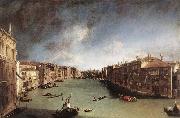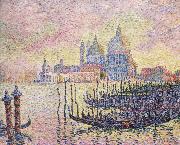Wholesale Oil Painting Reproductions No Minimum and Door to Door! |
|||||||||||
|
|
|||||||||||

|
|||||||||||
|
|
|
||||||||
All Canaletto Oil Paintings |
||||||||
|
|
||||||||
|
|
||||||||
|
Artist Introduction: Italian Rococo Era Painter, 1697-1768
Italian painter, etcher and draughtsman. He was the most distinguished Italian view painter of the 18th century. Apart from ten years spent in England he lived in Venice, and his fame rests above all on his views (vedute) of that city; some of these are purely topographical, others include festivals or ceremonial events. He also painted imaginary views (capriccios), although the demarcation between the real and the invented is never quite clearcut: his imaginary views often include realistically depicted elements, though in unexpected surroundings, and in a sense even his Venetian vedute are imaginary. He never merely re-created reality. He was highly successful with the English, helped in this by the British connoisseur JOSEPH SMITH, whose own large collection of Canaletto works was sold to King George III in 1762. The British Royal Collection has the largest group of his paintings and drawings. |
||||||||
|
|
||||||||
|
Grand Canal Painting ID:: 63075 |
Looking Northeast from Palazo Balbi toward the Rialto Bridge 1723-24 Oil on canvas, 144 x 207 cm Museo del Settecento Veneziano, Ca' Rezzonico, Venice The painting is part of a series of four vedute (now two are in the Thyssen collection and two in the Museo del Settecento in Venice). The four paintings reveals the influence of Marco Ricci. Artist: CANALETTO Painting Title: Grand Canal, Looking Northeast from Palazo Balbi toward the Rialto Bridge , 1701-1750 Painting Style: Italian , , landscape |
|||||||
Height Width |
INS/CM Quality |
|||||||
|
X |
| |||||||
|
|
||||||||
All Paul Signac Oil Paintings |
||||||||
|
|
||||||||
|
|
||||||||
|
Artist Introduction: 1863-1935
French
Paul Signac Galleries
Paul Victor Jules Signac was born in Paris on November 11, 1863. He followed a course of training in architecture before deciding at the age of 18 to pursue a career as a painter. He sailed around the coasts of Europe, painting the landscapes he encountered. He also painted scenes of cities in France in his later years.
In 1884 he met Claude Monet and Georges Seurat. He was struck by the systematic working methods of Seurat and by his theory of colours and became Seurat's faithful supporter. Under his influence he abandoned the short brushstrokes of impressionism to experiment with scientifically juxtaposed small dots of pure colour, intended to combine and blend not on the canvas but in the viewer's eye, the defining feature of pointillism.
Many of Signac's paintings are of the French coast. He left the capital each summer, to stay in the south of France in the village of Collioure or at St. Tropez, where he bought a house and invited his friends. In March 1889, he visited Vincent van Gogh at Arles. The next year he made a short trip to Italy, seeing Genoa, Florence, and Naples.
The Port of Saint-Tropez, oil on canvas, 1901Signac loved sailing and began to travel in 1892, sailing a small boat to almost all the ports of France, to Holland, and around the Mediterranean as far as Constantinople, basing his boat at St. Tropez, which he "discovered". From his various ports of call, Signac brought back vibrant, colourful watercolors, sketched rapidly from nature. From these sketches, he painted large studio canvases that are carefully worked out in small, mosaic-like squares of color, quite different from the tiny, variegated dots previously used by Seurat.
Signac himself experimented with various media. As well as oil paintings and watercolours he made etchings, lithographs, and many pen-and-ink sketches composed of small, laborious dots. The neo-impressionists influenced the next generation: Signac inspired Henri Matisse and Andr?? Derain in particular, thus playing a decisive role in the evolution of Fauvism.
As president of the Societe des Artistes Ind??pendants from 1908 until his death, Signac encouraged younger artists (he was the first to buy a painting by Matisse) by exhibiting the controversial works of the Fauves and the Cubists. |
||||||||
|
|
||||||||
|
|
grand canal Painting ID:: 71318 |
mk290 1905 28x36in |
||||||
Height Width |
INS/CM Quality |
|||||||
|
X |
| |||||||
|
|
||||||||
|
Prev Next
|
||||||||
|
|
||||||||
|
Related Paintings to Paul Signac :. |
||||||||
|
|
||||||||
|
CONTACT US |


